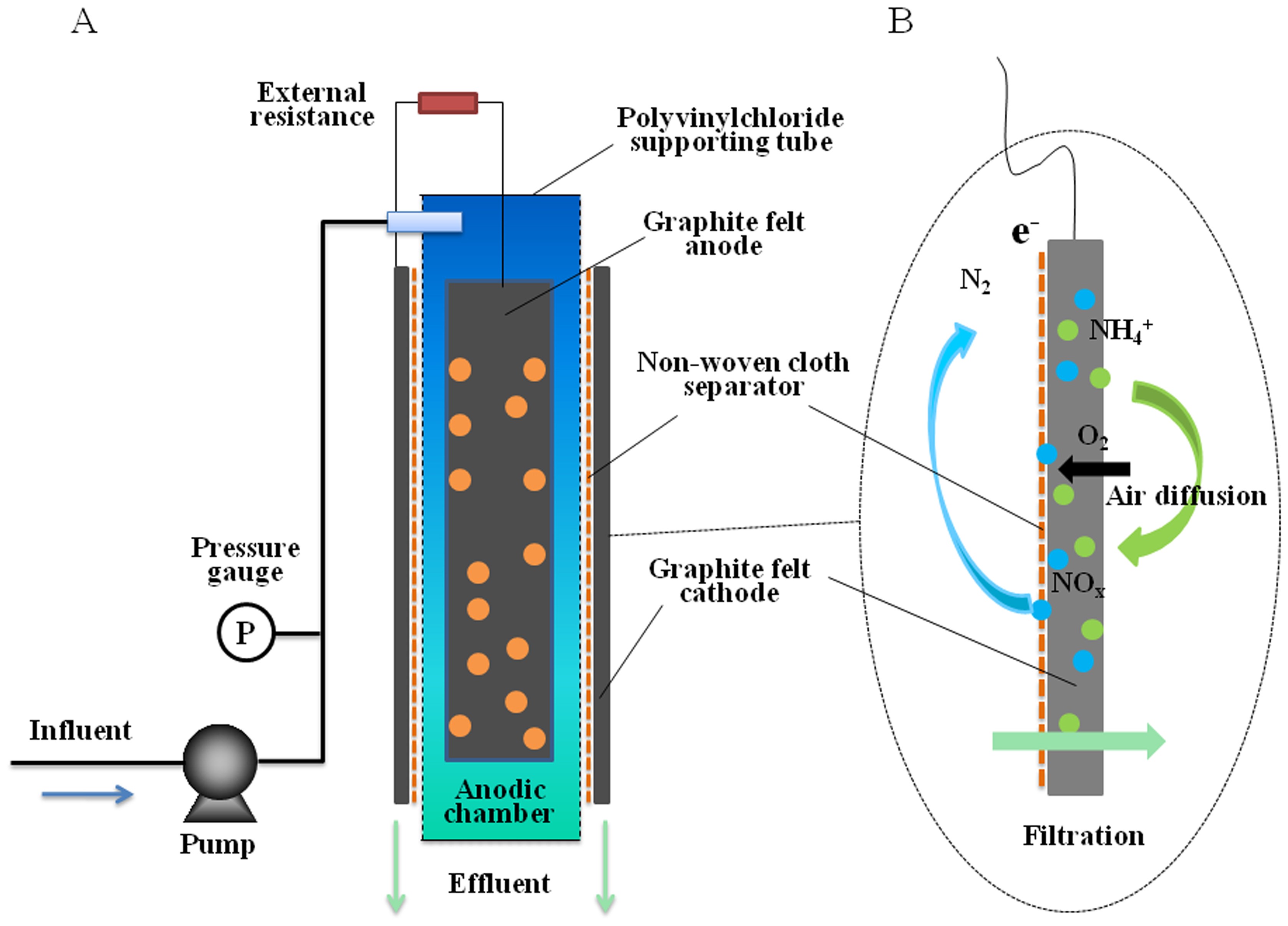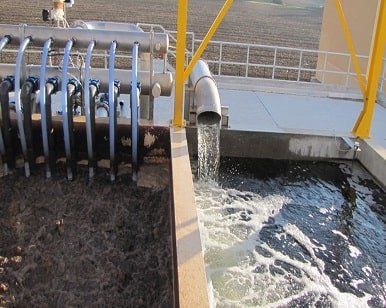The Benefits of Membrane Bioreactors in Sustainable Wastewater Administration
Membrane bioreactors (MBRs) stand for a crucial improvement in sustainable wastewater administration, successfully combining biological treatment with sophisticated membrane purification technology. As the demand for lasting options intensifies, exploring the complex advantages of MBRs may expose unexpected implications for the future of wastewater therapy systems.
Introduction of Membrane Layer Bioreactors
Membrane layer bioreactors (MBRs) represent a considerable innovation in wastewater therapy technology, integrating organic destruction with membrane filtration to enhance the effectiveness of the therapy process. This cutting-edge system combines the benefits of conventional triggered sludge procedures with membrane innovation, permitting enhanced solid-liquid splitting up. MBRs utilize semi-permeable membrane layers to separate cured water from biomass, resulting in high-grade effluent that can be reused or securely discharged into the setting.
The operational style of MBRs typically entails a bioreactor where microbes break down raw material, followed by a membrane layer unit that filters the blended alcohol. This configuration not just minimizes the footprint of the therapy center but likewise allows for higher biomass concentrations and minimized hydraulic retention times. Moreover, MBRs are capable of treating a larger variety of impurities, including nutrients and microorganisms, making them ideal for numerous applications, from municipal wastewater treatment to commercial effluent handling.
The integration of MBRs into wastewater management systems is indicative of an expanding fad towards sustainable and efficient methods in environmental design. Their capacity to generate top quality effluent while decreasing area demands settings MBR innovation as an essential player in modern wastewater treatment solutions.
Boosted Effluent Top Quality

The membrane layer purification process functions as a physical barrier, making it possible for the retention of microbes and particulate issue, which contributes to a clearer and cleaner effluent (Membrane Bioreactor). MBRs run at greater biomass concentrations than conventional activated sludge systems, advertising much more efficient biodegradation of toxins. This results in a decrease in biochemical oxygen demand (BODY) and total put on hold solids (TSS) levels in the last effluent
Additionally, MBRs demonstrate excellent efficiency in treating difficult wastewater compositions, such as industrial effluents and wastewater with high nutrient tons. Therefore, the effluent generated is frequently of better, permitting more flexible disposal alternatives and minimized ecological influence. Eventually, the improved effluent quality attained through MBR innovation underscores its vital duty in advancing lasting wastewater management methods.
Water Reuse Opportunities
The high-quality effluent created by membrane bioreactors (MBRs) opens significant chances for water reuse in numerous applications. MBRs properly get rid of pollutants, consisting of virus, put on hold solids, and organic matter, leading to cured water that fulfills or exceeds regulatory requirements for reuse. This high quality permits for the implementation of water recycling efforts across diverse fields.
One prominent application is in agriculture, where treated wastewater can be used for watering, promoting sustainable farming practices while conserving freshwater resources. Furthermore, MBR-treated effluent can be utilized for industrial procedures such as air conditioning, cleansing, and as a procedure water resource, significantly reducing the demand for potable water in these procedures.
In metropolitan atmospheres, MBRs assist in using recovered water for landscape watering, commode flushing, and various other non-potable usages, contributing to the general durability of water systems. The integration of MBR modern technology in decentralized systems aids in taking care of local water demands, particularly in water-scarce regions.
Reduced Ecological Effect
Exactly how can the adoption of membrane layer bioreactors (MBRs) contribute to a minimized environmental impact in wastewater monitoring? MBRs significantly improve the treatment effectiveness of wastewater while lessening environmental disruptions. Membrane Bioreactor.
Additionally, MBRs run at reduced hydraulic retention times compared to standard systems, resulting in smaller sized go to my blog therapy plant footprints. This portable design minimizes land usage, thus maintaining natural environments and biodiversity. The procedure also produces much less sludge than traditional techniques, minimizing disposal challenges and reducing greenhouse gas exhausts related to sludge administration.
In addition, MBRs facilitate the healing of useful sources, such as water and nutrients, contributing to a circular economic climate. By allowing water reuse for irrigation or commercial processes, MBRs aid alleviate freshwater shortage, thus advertising sustainable water visit homepage utilize practices. Ultimately, the fostering of MBR innovation stands for a considerable stride in the direction of minimizing the environmental impact of wastewater management systems.
Economic Benefits of MBRs

Furthermore, MBRs assist in the manufacturing of top notch effluent, which can be recycled for numerous applications, such as farming watering and commercial processes - Membrane Bioreactor. This reuse capacity can significantly lower water purchase expenses, offering a monetary motivation for industries encountering rigorous water guidelines
The small design of MBR systems also leads to reduced land requirements, which is specifically useful in metropolitan areas where real estate is pricey. By decreasing area, towns and industries can save money on land acquisition and upkeep costs.
Moreover, MBRs typically need less regular maintenance and have a longer life-span than standard systems, additionally adding to cost financial savings. In summary, the financial benefits of MBRs-- ranging from decreased functional expenses to land financial savings and effluent reuse-- make them a compelling choice for sustainable wastewater monitoring, supplying both prompt and long-term financial benefits.
Conclusion
In addition, MBRs add to decreased environmental influences through small layouts and reduced Source sludge generation. Economic benefits further boost their viability, making MBRs an appealing service for attending to the challenges of wastewater treatment and advertising lasting resource monitoring.
Membrane layer bioreactors (MBRs) stand for a critical advancement in lasting wastewater administration, efficiently combining biological treatment with sophisticated membrane layer purification innovation.Membrane bioreactors (MBRs) stand for a significant advancement in wastewater therapy technology, integrating biological destruction with membrane filtering to enhance the efficiency of the treatment process.Attaining enhanced effluent quality is one of the most substantial advantages of utilizing membrane layer bioreactors (MBRs) in wastewater therapy.In addition, MBRs show excellent efficiency in dealing with challenging wastewater make-ups, such as industrial effluents and wastewater with high nutrient tons.Integrating membrane layer bioreactors (MBRs) into wastewater administration not only minimizes ecological impact however also presents considerable economic benefits.